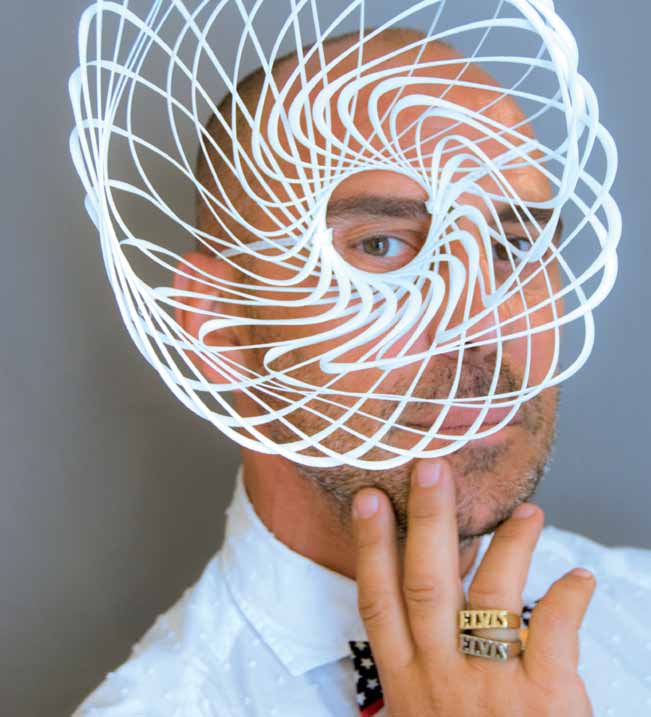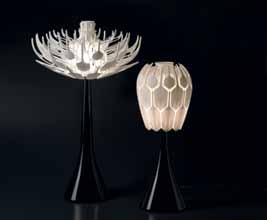It is now possible to clone a three dimensional object by scanning it and printing it out – Colin Moors gets to grips with the technology behind 3D printing and a Belgian success story
Rapid prototyping has long been the preserve of the engineer – instant modelling of conceptual designs done in industrial units by draughtsmen, architects and scientists. Once a cheap alternative to making proof-of-concept pieces by hand from intricate drawings, rapid prototyping is about to set the worlds of fashion, interior design and even millinery on fire, thanks to the vision and innovation of Materialise, a Leuven-based company.
Materialise has 20 years of experience in additive manufacturing, the technology behind rapid prototyping – or 3D printing, as it is more widely known. From test pieces for manufacturing companies to replica skeletal structures for complex facial surgery, Materialise has many of the bases covered. Now the company, marketed as .MGX, has branched into retail.
The 3D printing process is complex in execution but simple to explain: it begins with a 3D drawing on a computer linked to the printer. Following the specifications of the drawing, plastics such as polyamide or epoxy are laid down in thin layers and hit with a laser that instantly hardens them. The process is repeated until a full model materialises.
Models can be put together in very thin layers (around 0.01mm), thus attaining a high degree of detail. It also means that items with many moving parts can be produced all at once, layer by layer, completely removing the need for final assembly.
STYLE AND BEAUTY
This technology provides the flexibility to create objects of outstanding style and beauty. A range of designs on display in the .MGX flagship store at the heart of the Sablon in Brussels is proof of how beautiful printed plastic can be.
Alessio Esposti, Art Director at .MGX explains: “Fried Vancraen, our CEO, was looking to keep the successful businessto-business part of the company growing but also branch out into something else, something that would bring our technology to the retail sector.” Esposti says lighting seemed the obvious choice.
“The materials we use lend themselves very well to lighting as they are lightweight, translucent and hardwearing,” he says. “We have worked hard to make the plastics more durable. In prototyping, we don’t expect a model to last very long but for our retail clients, it needed to be stronger.”
Strength does not necessarily mean the lighting designs lose the human or artistic touch, and the pieces produced can often surprise. Polyamide produces lampshades which give off a soft, diffused light; the epoxy pieces, by contrast, have an almost amber glow, and create a warm, cosy atmosphere. Perhaps the most surprising of all are some of the pendant lampshades I was encouraged to touch during my visit to the Sablon store – something I had studiously avoided for fear of breaking them. As I pushed a shade with my fingers, it gave very gently and had the feel of finely threaded lace – the whole thing printed in one shot, according to Esposti.
UNIQUE PIECES
The nature of this production method has another facet: meta-design. Instead of churning out exactly the same thing on every printing, objects can be randomized, within certain parameters, creating a unique piece each time. This means nobody need ever own the same design.
Conceived by Lars Spuybroek, principal of the NOX architecture and design studio in Rotterdam, the Mylight range is one that will morph into other designs throughout the print run. Spuybroek is well-placed to be involved in such an undertaking, his specialty being the relationship between art, design and architecture. Of the meta-design concept he says: “Objects can now be a range of objects, like in a family or a species, like zebras or oaks or strawberries, or of course people. No one is the same but they are similar enough to be recognized.”
An exhibition of 3D printed .MGX pieces – Industrial Revolution 2.0 – at London’s Victoria & Albert Museum was recently extended, by popular demand, until the end of October. And the world of couture was treated to some high-concept items of clothing by .MGX at the Amsterdam International Fashion Week in July. There is more to follow, and fashion is certainly the stock in trade of the latest big name to collaborate with the brand – Brusselsbased milliner Elvis Pompilio. World renowned for his hat creations, Pompilio explains what brought about his interest in working with architects and scientists to create what must be the very cutting edge of millinery, the high tech Spirograph.MGX hat.
“It was the first time I have worked closely with such people – and with this material. For me, it was a new experience,” he says. “I’m 50 now, and I thought it was a good time to experience something new and to work with different materials.” He adds: “I love my work and I love to be surprised. To surprise me is difficult, but this has managed it.”
This will be the beginning of a long-term working partnership with .MGX, so I asked Pompilio what he sees in the future. Is there a wider market for his creations? He replies: “When I make things, I don’t worry about the market. I like to make something beautiful, something I love, something I care about. However, this method of production is ideal for creating a large quantity of items.” So how would Pompilio feel if there were great demand and orders for 10.000 of his creations? .MGX’s Alessio Esposti steps in with the answer: “I don’t think anyone would have a problem with that,” he interjects with a smile.
.MGX by Materialise Rue Joseph Stevensstraat 31, B-1000 Brussels www.mgxbymaterialise.com









